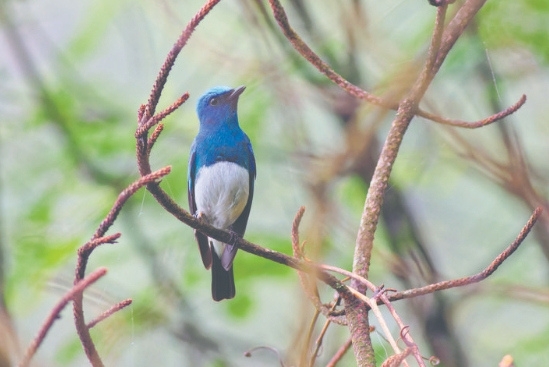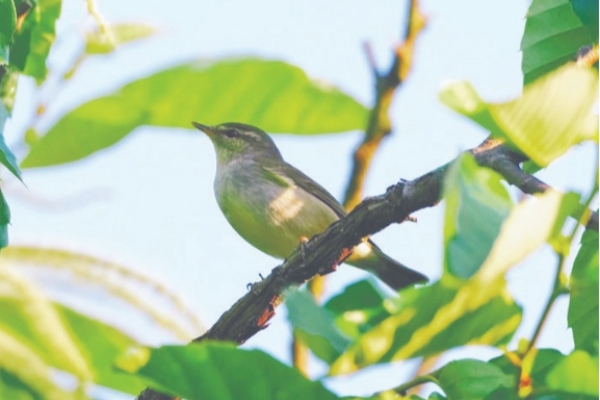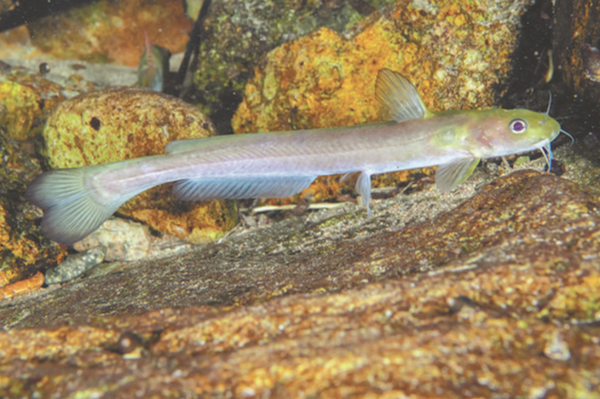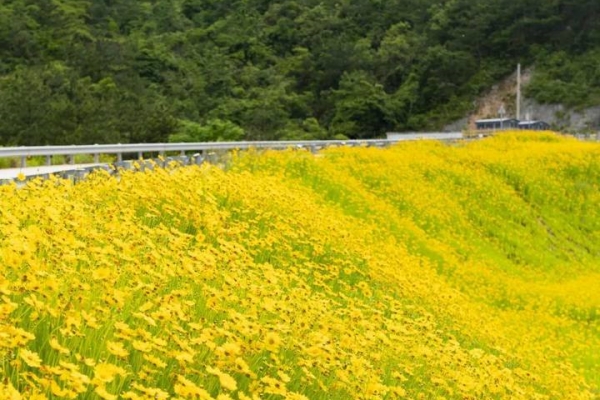CDB aims to help build 'beautiful China' with financial support
State-owned bank's green finance empowers country to embrace a cleaner and brighter future
In the mountains near Qingyuan, Zhejiang province, construction of a pumped storage power station with a total capacity of 1.2 million kilowatts is in full swing. Since the start of this year, the Zhejiang branch of China Development Bank has issued 350 million yuan ($48.2 million) in medium and long-term loans, providing strong support for the steady progress of the project.
Zhejiang boasts abundant water resources, with multiple rivers flowing through hilly and mountainous regions, harboring immense hydrodynamic energy. This natural advantage has become the foundation for constructing pumped storage power stations. Dubbed the "green power bank", the Qingyuan station will be capable of fulfilling the functions of peak shaving, valley filling, frequency regulation, and energy storage in the power system upon completion. It will play a crucial role in enhancing consumption of clean energy, optimizing energy structure and ensuring the stable operation of the power system.
Green development is the cornerstone of high-quality development, and CDB leverages its advantages in medium and long-term investment and financing to continuously enrich green financial products and services.
CDB is increasing its support for green finance in energy conservation, pollution reduction, carbon reduction, afforestation and disaster prevention as well as the construction of a clean and low-carbon energy system and widespread application of green technologies. These efforts help to facilitate the transformation of economic and social development toward a green mode. From January to May this year, CDB had issued more than 200 billion yuan in green loans.
Currently, CDB is actively supporting the reduction of fossil fuel consumption and promoting non-fossil energy consumption, energy conservation and carbon reduction in industries such as steel, petrochemicals and transportation. Utilizing carbon reduction facilitating tools effectively, it has issued more than 110 billion yuan in carbon reduction loans.
Steel is a crucial foundational industry of the national economy and a key industry in terms of energy consumption and carbon dioxide emission. In recent years, HBIS Group in Shijiazhuang, Hebei province, has been exploring clean production by establishing a green manufacturing system centering on energy, water resources, and solid waste recycling. The Hebei branch of CDB collaborated with the group and financed its technological developments and applications in desulfurization, denitrification, dust removal and the comprehensive utilization of smelting waste gases and slag.
With the widespread application of desulfurization and denitrification technologies, HBIS Group can annually save 14,880 metric tons of coal consumption while its subsidiary company, Hansteel, is able to reduce emissions of smoke gas by 3.4 billion cubic meters annually. Wei Tianyu, a staff member at the Hebei branch, said: "We will actively provide green financial services, promote the green transformation of traditional industries and accelerate the development of new quality productive forces."
Additionally, CDB is participating in the campaign for protection of the Yangtze River and Yellow River basins and supporting construction of waste and sewage treatment facilities at the county level. It is also serving some pilot projects for "zero-waste cities".
The Chishui River flowing through Yunnan, Guizhou and Sichuan provinces is the only primary tributary of the upper reaches of the Yangtze River that maintains its natural course without dams. It serves as a key part of the national-level natural reserve area for endangered fish species in the upper reaches of the Yangtze River.
In Gulin, Sichuan province, the Sichuan branch of CDB actively supports a sewage treatment project of the main stream of the Chishui River. It involves construction of 555 sewage treatment stations in 64 villages and the upgrading of five existing sewage treatment plants. These efforts significantly increased the local sewage treatment capacity to more than four times its original level.
In Xishui, Guizhou province, the Guizhou branch of CDB follows a comprehensive, systematic, and holistic approach to support overall improvement of the water environment through integrated management and restoration of the Chishui River basin, river channel rectification, embankment restoration, and ecological restoration. The projects include construction of more than 400 kilometers of new sewage pipelines, advancement of 177 km of river ecological restoration and treatment of approximately 142,900 square meters of reservoir drawdown areas.
CDB also advocates for integrated protection and comprehensive management of mountains, rivers, forests, fields, lakes, grasslands and sands. Focused on afforestation and disaster prevention, it supports development of key areas such as the protection and restoration of ecosystems and national forest reserves, construction of basin flood control engineering systems such as water conservancy hubs, reservoirs, and river channel management, as well as basin disaster prevention.
In order to optimize green financial product services and address the financing challenges in the field of ecological restoration and environmental protection, CDB promotes innovation in investment and financing models based on both the market and the law. It participates in climate investment and financing pilot projects, supports development of projects under the Eco-environment Oriented Development model, and explores the commercialization of ecological products.
Located in the western part of Donggang district of Rizhao, Shandong province, Rizhao Reservoir is the seventh-largest reservoir in Shandong and a significant source of drinking water while serving functions such as flood control and irrigation. However, due to inadequate ecological protection, the reservoir once faced a water crisis.
To address the issue, the Shandong branch of CDB collaborated with local stakeholders to explore joint governance and product development under the EOD model. This approach considers the ecological environment as a key element in investment, allowing market entities to invest future profits into ecological environmental governance at the current moment, and recover governance costs through later industrial value appreciation.
Since the start of this year, the Shandong branch of CDB has provided 254 million yuan in loans to the Rizhao Reservoir EOD project, with a cumulative total of 414 million yuan to support construction of isolation fences, garbage interception systems, and restoration of upstream river wetlands. It also supports industries with low environmental pollution, large development space, good market prospects, and anticipated project returns.
The ecological environment of the reservoir continues to improve, with the recovery of the indigenous fish population. Local products such as hazelnuts, apples and tea have obtained organic certification, leading to steady increases in market prices. Through land leasing, scenic area development, and project operations, the average annual income per capita for villagers in the surrounding areas now increases 50,000 yuan. Shandong branch employee Chi Shoudong said: "A good ecological environment harbors immense economic value. We will hold fast to the concept that green mountains and clear waters are invaluable assets and continue to explore effective models for financial services in the field of environmental protection."
CDB officials said the bank will continue to strengthen its functional positioning and improve the quality and effect of green financial services. Additionally, CDB will increase support for green and low-carbon development in energy and water resources, transportation, urban and rural construction, as well as green and low-carbon technological innovation and transformation and upgrading of key industries, contributing to the modernization for harmonious coexistence of people and nature.

 Lishui adds new bird record to Zhejiang
Lishui adds new bird record to Zhejiang Lishui's bird record expanded to 450 species
Lishui's bird record expanded to 450 species New catfish species discovered in Lishui
New catfish species discovered in Lishui